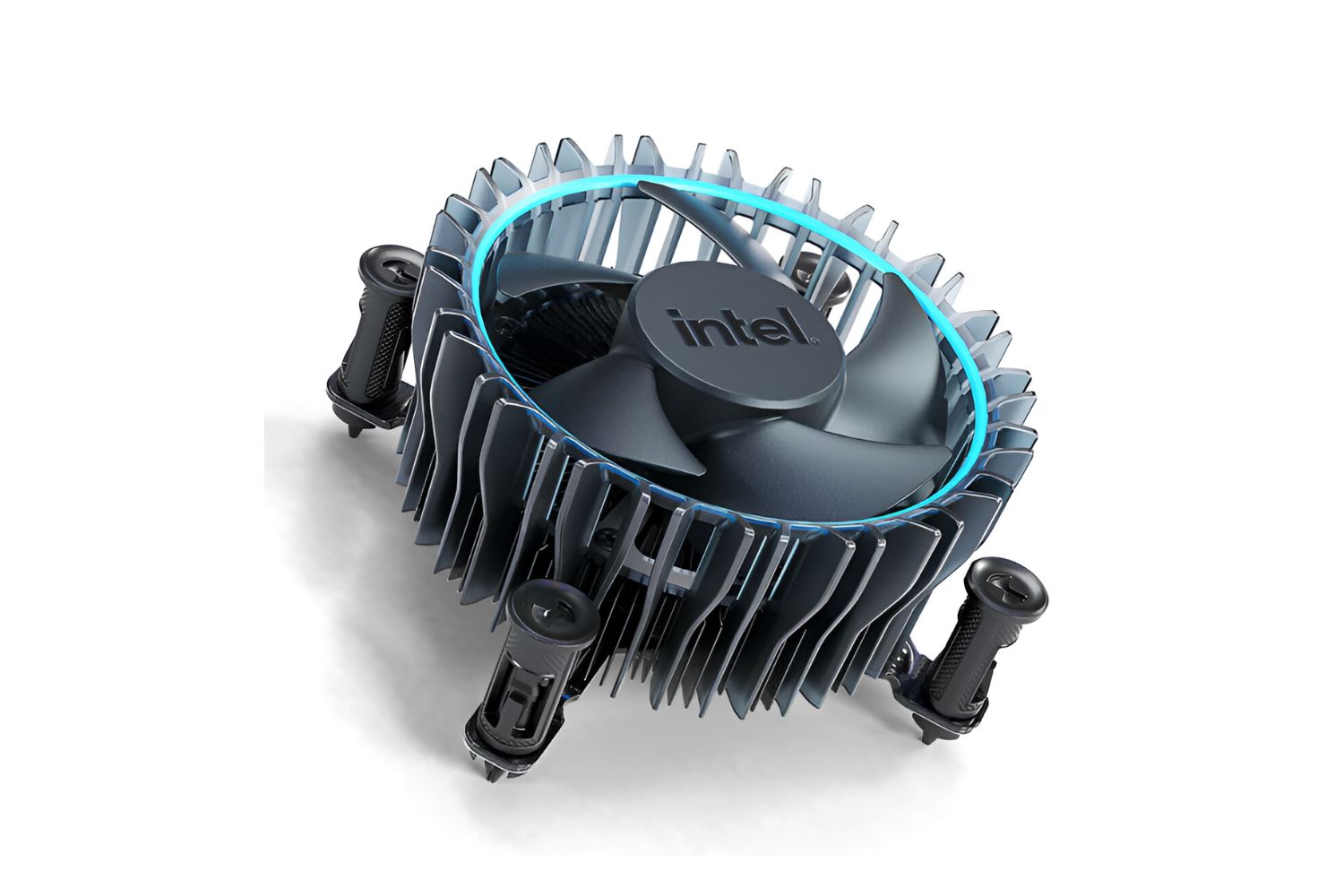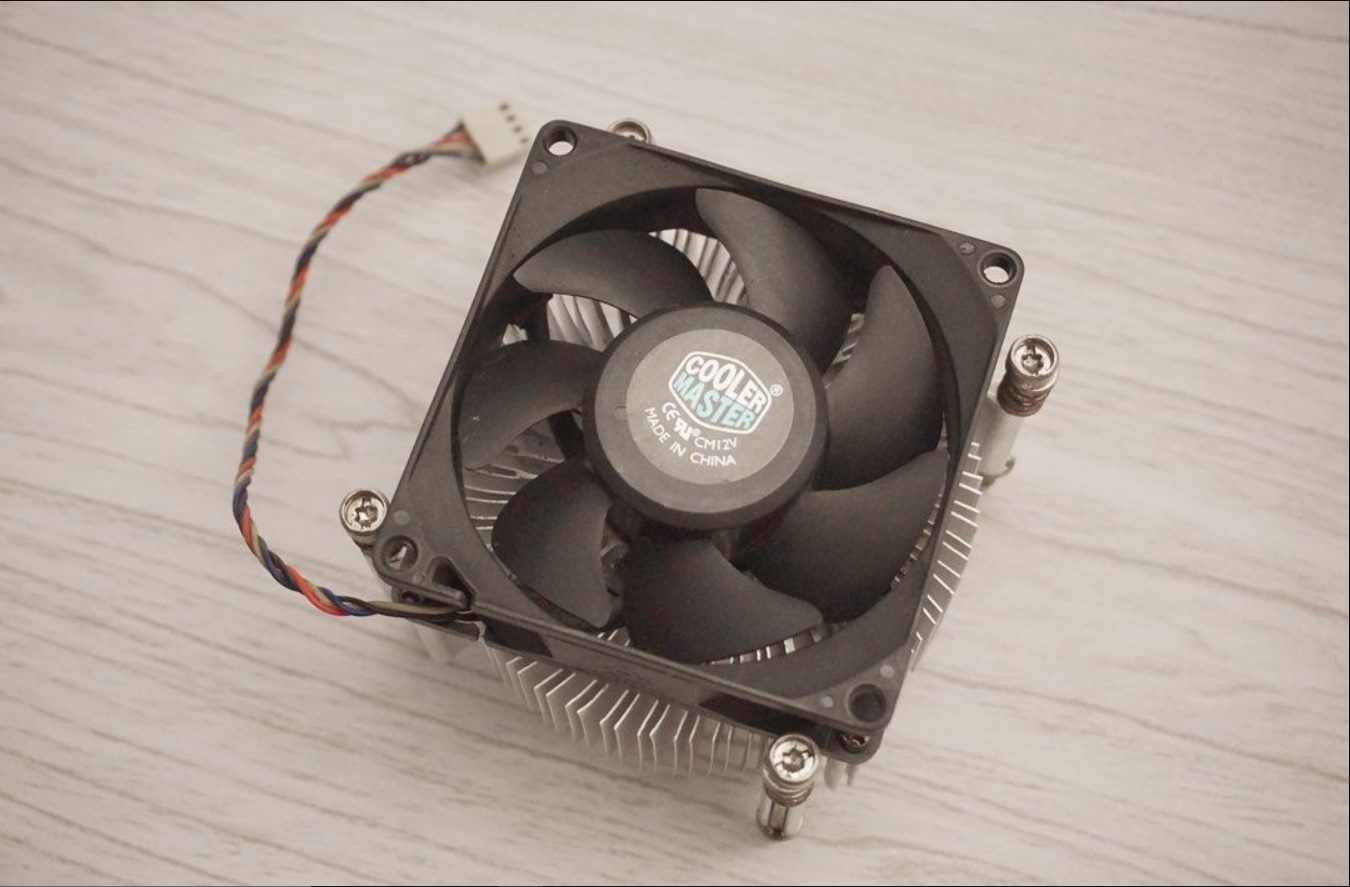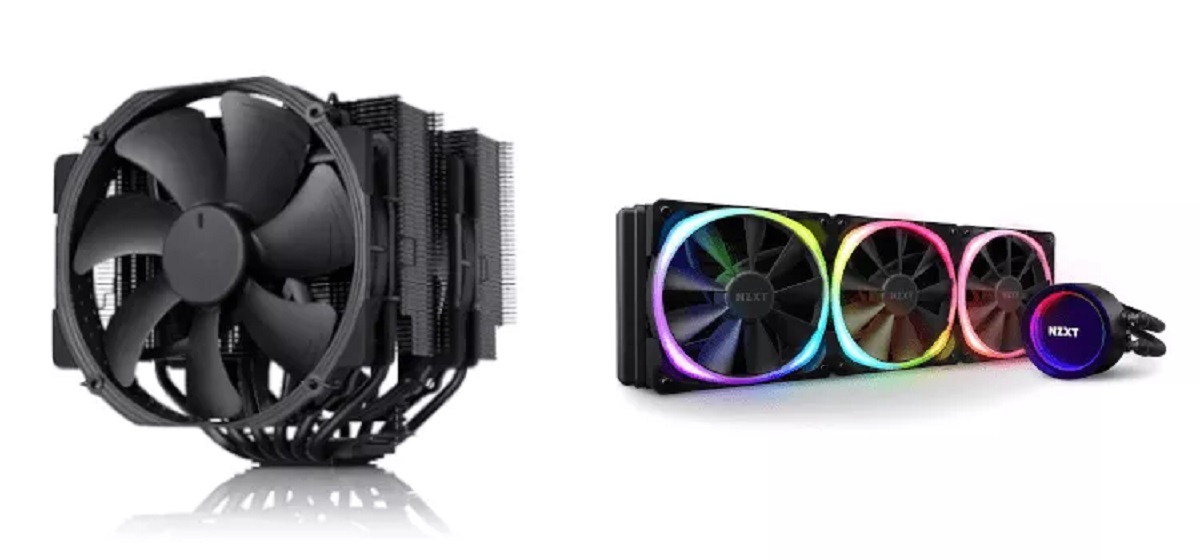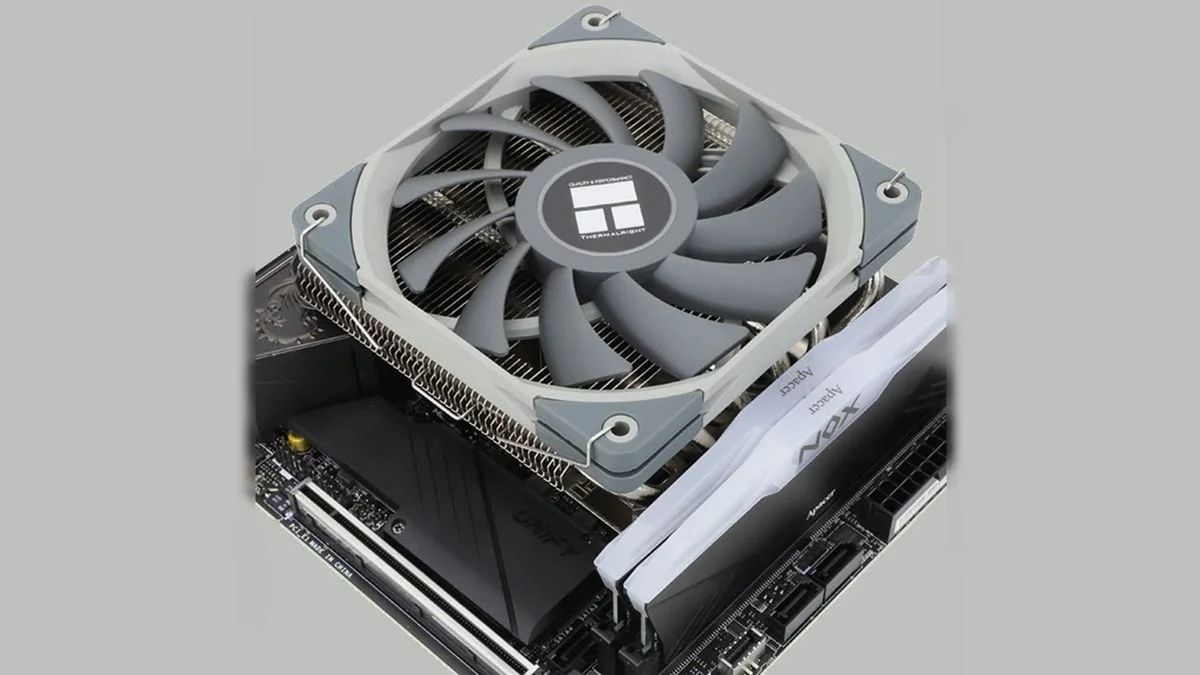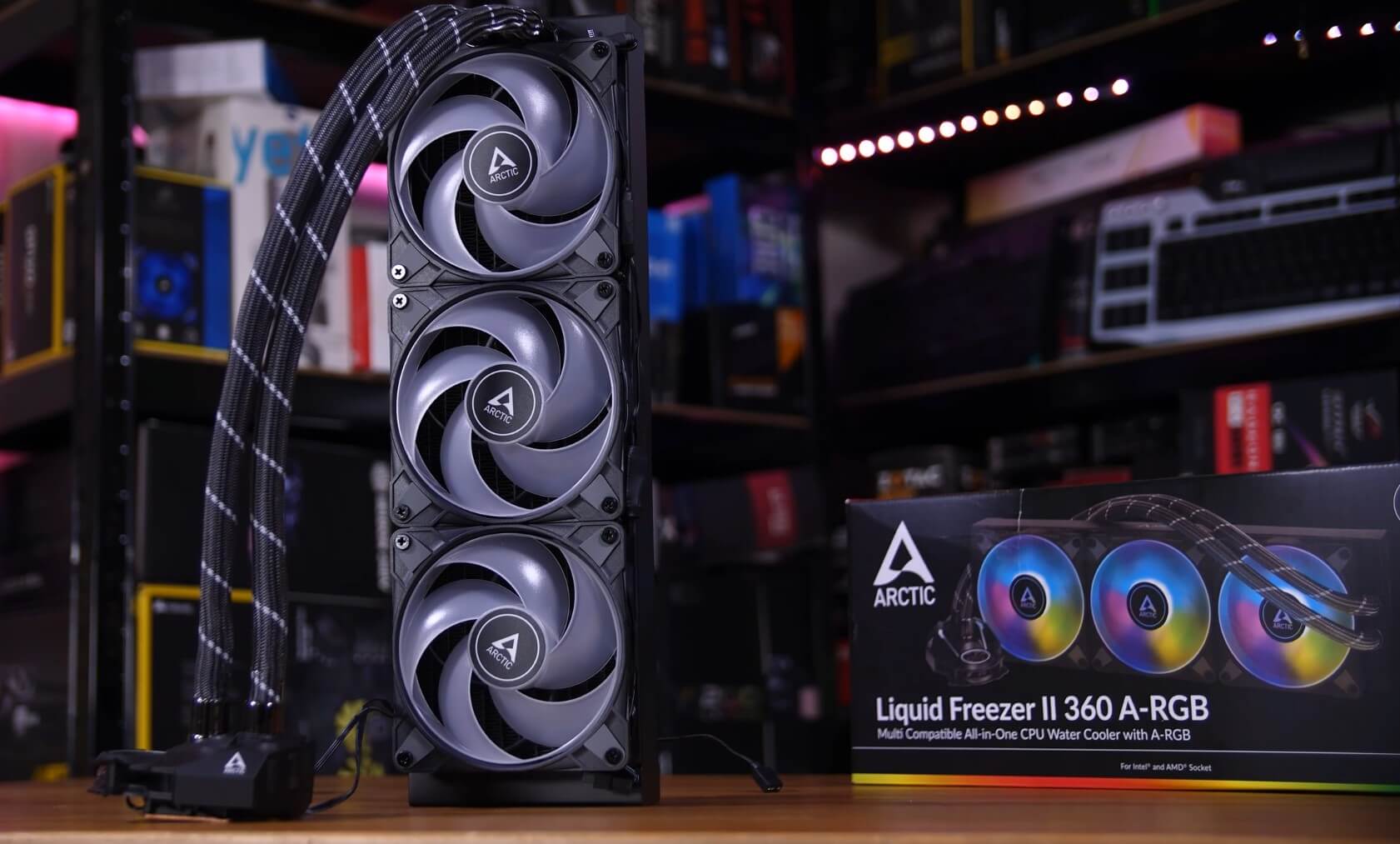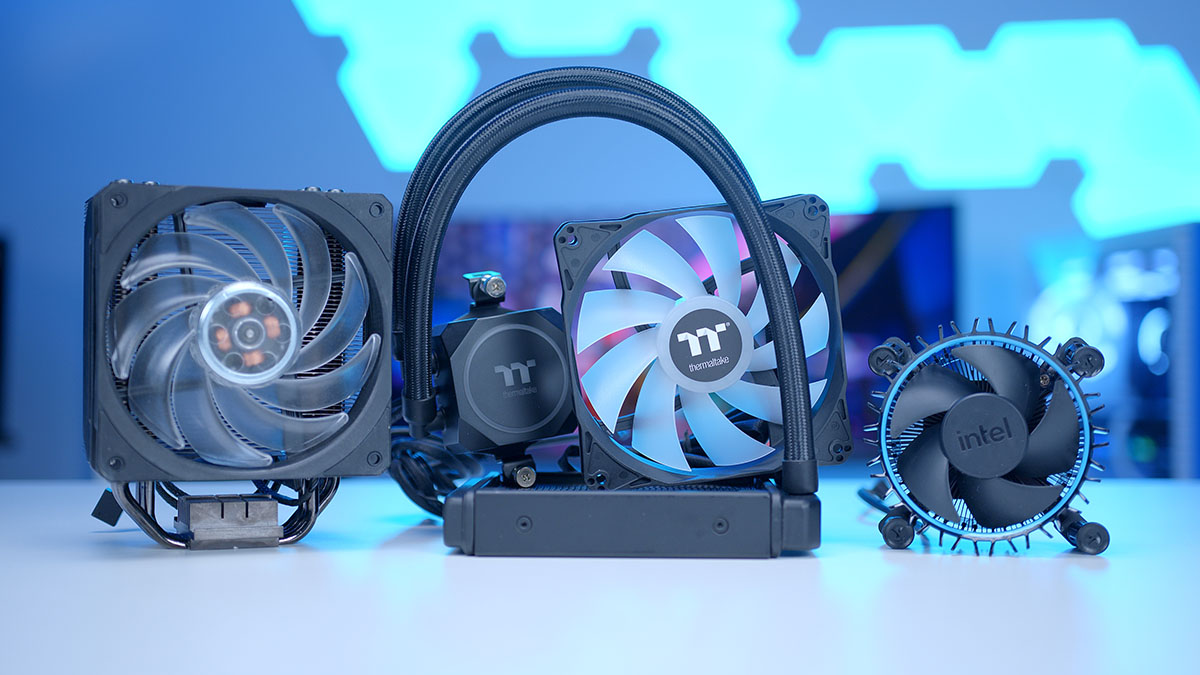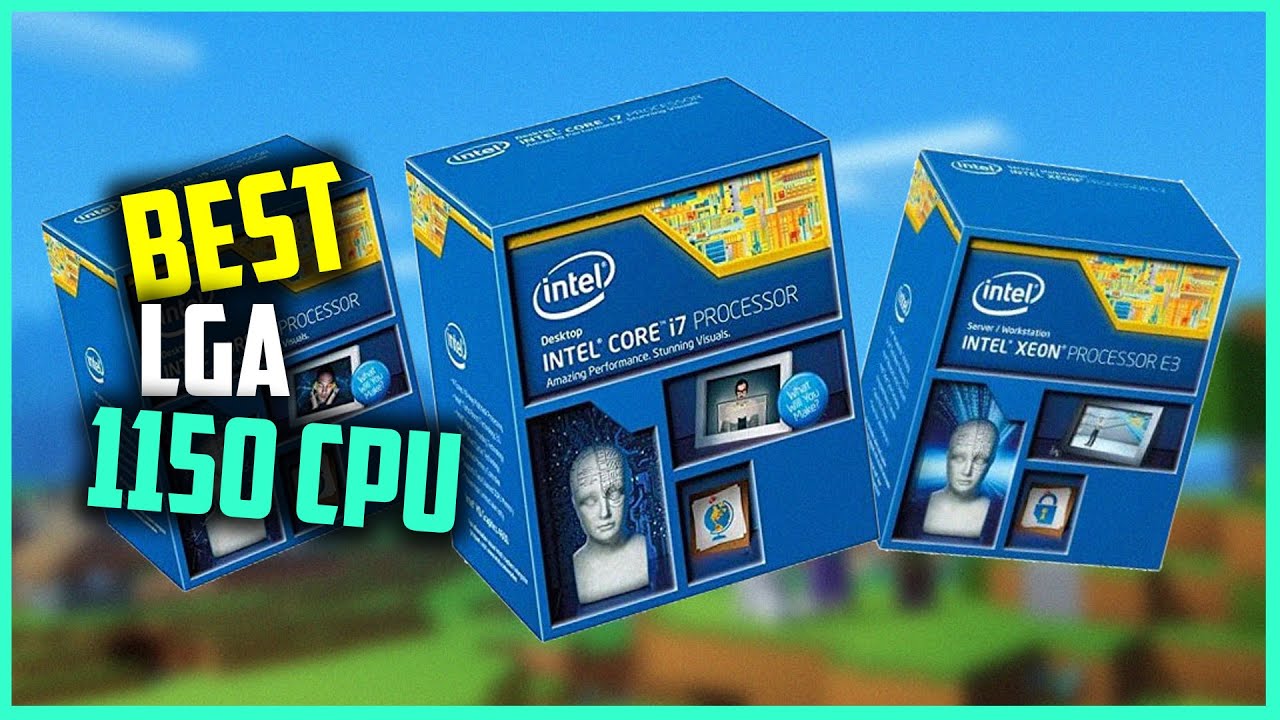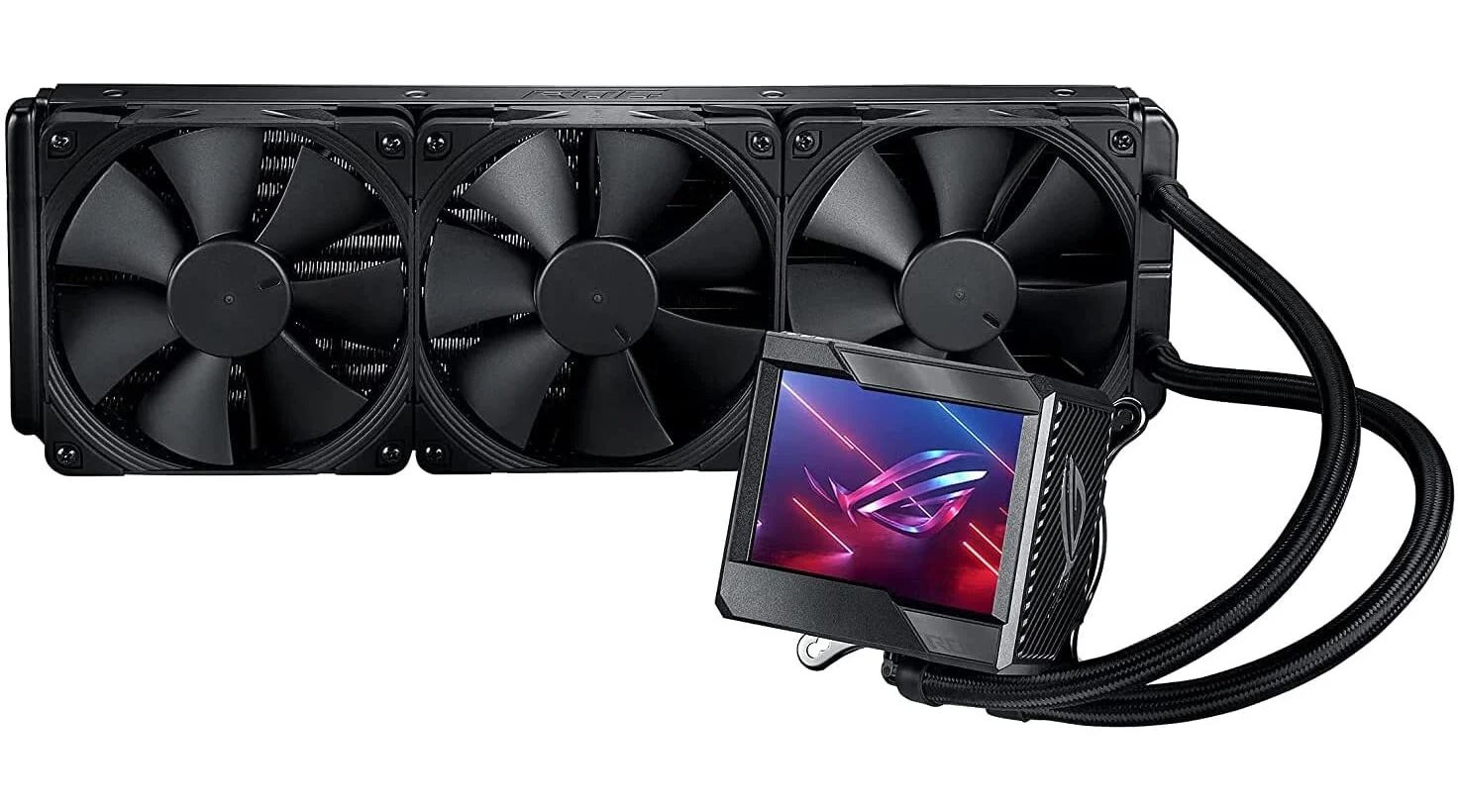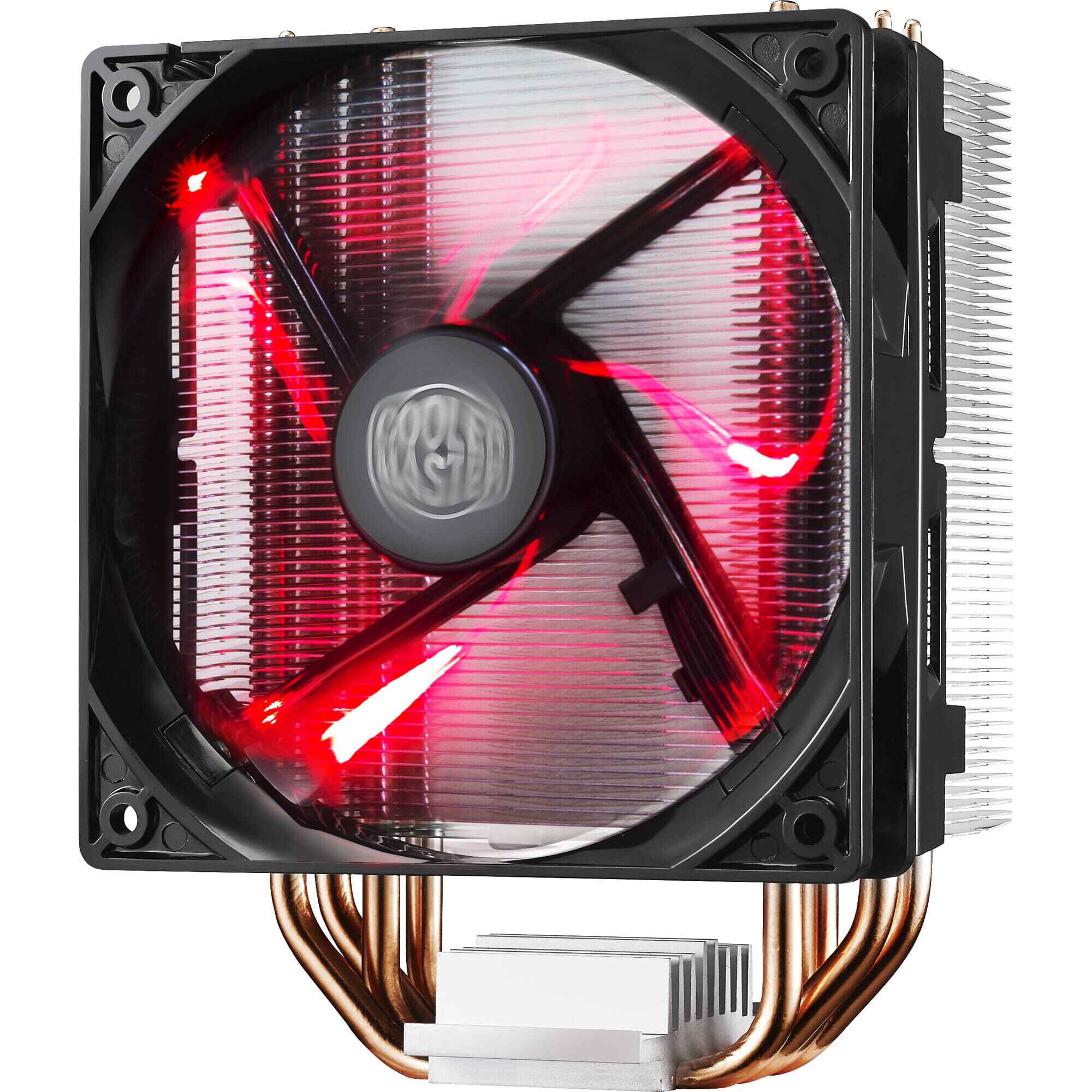Introduction
Welcome to our in-depth review of the Intel Basic CPU Cooler. If you’re a tech enthusiast, building your own system, or simply looking to upgrade your existing CPU cooler, you’ve come to the right place.
The CPU cooler is an essential component for any computer system as it helps dissipate the heat generated by the processor. Without an efficient cooling system, your CPU could overheat, leading to performance issues, instability, and potentially permanent damage to your valuable hardware.
While there are countless options available in the market, we’ll be focusing specifically on the Intel Basic CPU Cooler in this review. This cooler comes bundled with select Intel processors and is often the default choice for many PC builders. But how well does it actually perform?
Throughout this article, we’ll delve into the features, performance, pros, and cons of the Intel Basic CPU Cooler. We hope that by the end, you’ll have a clear understanding of whether this cooler is sufficient for your needs, or if it’s worth considering an upgrade to a more advanced cooling solution.
What is the Intel Basic CPU Cooler?
The Intel Basic CPU Cooler is a stock cooler offered by Intel as a bundled option with certain Intel processors. It is designed to provide adequate cooling for the processor without the need for additional aftermarket cooling solutions. This cooler is often included with entry-level and mid-range Intel CPUs.
This cooler features a compact design with a heatsink and a fan attached to it. The heatsink is typically made of aluminum, which helps in dissipating the heat generated by the processor. The fan, on the other hand, is responsible for expelling the hot air away from the heatsink, ensuring that the CPU operates within acceptable temperature limits.
One of the key features of the Intel Basic CPU Cooler is its ease of installation. It comes with a simple mounting mechanism that allows users to securely attach the cooler to the CPU socket without the need for any special tools or additional hardware.
It’s important to note that the Intel Basic CPU Cooler is a basic cooling solution meant to provide adequate cooling for stock or light overclocked configurations. If you’re planning to push your CPU to its limits with heavy overclocking or running resource-intensive tasks for extended periods of time, you might need to consider more robust cooling options.
Overall, the Intel Basic CPU Cooler is a reliable and cost-effective cooling solution that is sufficient for standard usage scenarios. However, it’s worth considering your specific needs and requirements before making a decision, as more demanding applications may require a more powerful cooling solution.
How does the Intel Basic CPU Cooler work?
The Intel Basic CPU Cooler operates on a simple yet effective principle of heat transfer and air circulation. It is designed to dissipate the heat generated by the processor and maintain optimal operating temperatures.
The main component of the Intel Basic CPU Cooler is the heatsink. This heatsink is made of aluminum, which has excellent thermal conductivity properties. When the CPU generates heat during its operation, the heatsink absorbs this heat and spreads it across its surface area.
Attached to the heatsink is a fan. This fan plays a crucial role in maintaining the airflow around the heatsink. It draws cooler air from the surroundings and directs it towards the heatsink. As the air passes through the heatsink, it absorbs the heat from the aluminum fins, thus cooling down the heatsink.
Once the air has absorbed the heat from the heatsink, it is expelled outwards or pushed towards the rear of the computer case. This extraction of hot air helps in preventing heat buildup around the CPU and keeps the overall temperature of the system in check.
The fan works in conjunction with the heatsink, ensuring that a continuous flow of fresh, cool air is provided to dissipate the heat generated by the CPU. By maintaining an optimal operating temperature, the Intel Basic CPU Cooler helps in preventing thermal throttling, which can affect the performance and stability of the processor.
It’s important to note that the Intel Basic CPU Cooler operates as a passive cooling solution. It means that it relies solely on the airflow generated by the fan and the heat dissipation properties of the aluminum heatsink. This makes it suitable for standard usage scenarios where the CPU is not subjected to heavy loads or overclocking.
In cases where the CPU workload is increased or overclocking is employed, the Intel Basic CPU Cooler may not be able to provide sufficient cooling. This can lead to higher temperatures, decreased performance, and potential stability issues. In such situations, it’s advisable to consider more powerful cooling solutions such as liquid coolers or high-performance air coolers.
Overall, the Intel Basic CPU Cooler effectively manages the heat generated by the processor through a combination of heat transfer and air circulation. Its simplicity and reliability make it a suitable choice for standard usage scenarios where moderate cooling is required.
Performance of the Intel Basic CPU Cooler
The performance of the Intel Basic CPU Cooler is best assessed by analyzing its cooling capabilities and how effectively it manages the temperature of the processor under different usage scenarios.
Under normal operating conditions, the Intel Basic CPU Cooler is capable of adequately cooling the processor and keeping it within acceptable temperature ranges. It effectively dissipates the heat generated by the CPU through its aluminum heatsink and fan combination.
When used with stock or lightly overclocked processors, the Intel Basic CPU Cooler performs well, maintaining temperatures within the recommended operating range. It efficiently removes hot air from the heatsink and ensures a continuous flow of cool air, preventing the CPU from overheating.
However, the cooling performance of the Intel Basic CPU Cooler may be limited under heavy processing loads or in situations where the CPU is pushed to its maximum performance potential. In these cases, the cooler may struggle to keep the temperatures in check, resulting in higher thermal readings.
When compared to more advanced cooling solutions such as high-performance air coolers or liquid coolers, the Intel Basic CPU Cooler may lag behind in terms of cooling capacity. These advanced coolers generally feature larger heatsinks, multiple heat pipes, and higher airflow fans, allowing for better heat dissipation and improved temperature management.
It’s worth noting that the performance of the Intel Basic CPU Cooler can also be affected by factors such as the ambient temperature of the environment and the overall airflow within the computer case. Adequate case ventilation and proper cable management can contribute to better cooling efficiency, helping the cooler to maintain lower temperatures.
Therefore, while the Intel Basic CPU Cooler performs well within its intended usage scenarios, it may not be suitable for more demanding applications that require intensive processing or aggressive overclocking. In such cases, it’s recommended to consider upgrading to a more powerful aftermarket cooling solution to ensure optimal performance and temperature management.
Overall, the performance of the Intel Basic CPU Cooler is reliable for standard usage scenarios, offering sufficient cooling for stock or lightly overclocked processors. However, it’s important to consider your specific needs and usage requirements before deciding if this cooler meets your cooling expectations.
Pros of the Intel Basic CPU Cooler
The Intel Basic CPU Cooler comes with several advantages that make it a popular choice among PC builders. Let’s explore some of the pros of this cooling solution:
- Cost-effective: One of the major advantages of the Intel Basic CPU Cooler is that it’s included with select Intel processors, making it a cost-effective option. You don’t need to spend extra money on an aftermarket cooler if you’re not planning to overclock your CPU or engage in heavy processing tasks.
- Ease of installation: The Intel Basic CPU Cooler is designed for easy installation. It comes with a simple mounting mechanism that allows for quick and hassle-free installation onto the CPU socket. No special tools or additional hardware are required.
- Compact design: The Intel Basic CPU Cooler features a compact design that doesn’t take up much space inside the computer case. This can be beneficial, especially in smaller form factor cases where clearance might be limited.
- Reliability: The Intel Basic CPU Cooler is a reliable cooling solution for standard usage scenarios. It effectively manages the temperature of the processor under normal operating conditions, ensuring optimal performance and longevity of the CPU.
- Compatibility: Since the Intel Basic CPU Cooler is specifically designed for Intel processors, it offers broad compatibility across various CPU socket types. This makes it a convenient choice for those who are building systems based on Intel CPUs.
While the Intel Basic CPU Cooler may have its limitations, it is important to highlight these pros as they make it a practical option for users who don’t require extreme cooling performance or demand heavy overclocking capabilities.
Cons of the Intel Basic CPU Cooler
While the Intel Basic CPU Cooler has its advantages, there are also some drawbacks to consider before deciding if it’s the right cooling solution for your needs. Let’s take a look at some of the cons of this cooler:
- Limited cooling capacity: The Intel Basic CPU Cooler is designed to provide sufficient cooling for stock or lightly overclocked processors. However, it may struggle to keep temperatures in check under heavy processing loads or aggressive overclocking. Users who engage in demanding tasks might require a more powerful cooling solution.
- Noisy operation: Due to its compact design and smaller fan size, the Intel Basic CPU Cooler can sometimes produce higher levels of noise compared to larger aftermarket coolers. Although not excessively loud, the noise level may be noticeable in quieter environments or for users who prioritize a quieter computing experience.
- Limited customization: The Intel Basic CPU Cooler typically features a plain and basic design without any RGB lighting or aesthetic customizability. For users looking to create a visually appealing desktop setup with customizable lighting effects, the included cooler may not meet their preferences.
- Ineffective for extreme overclocking: If you plan to push your CPU to its maximum performance limits through aggressive overclocking, the Intel Basic CPU Cooler may not be able to provide sufficient cooling to maintain stable and safe temperatures. In such cases, a more advanced aftermarket cooler is necessary.
- Less robust construction: The Intel Basic CPU Cooler is constructed with lightweight materials, which may not offer the same durability and heat dissipation capabilities as high-end coolers. This can limit its lifespan and effectiveness over time, especially in scenarios involving prolonged heavy usage.
It’s important to assess your specific needs and usage requirements before deciding if the Intel Basic CPU Cooler is the right choice for you. While it provides adequate cooling for standard usage, users who engage in resource-intensive tasks or require advanced cooling capabilities may need to consider more powerful cooling solutions.
Is the Intel Basic CPU Cooler sufficient for your needs?
Whether the Intel Basic CPU Cooler is sufficient for your needs depends on several factors, including your usage requirements, CPU specifications, and performance expectations. Let’s evaluate the suitability of this cooler based on different scenarios:
Standard Usage: If you use your computer for everyday tasks such as web browsing, word processing, and multimedia streaming, the Intel Basic CPU Cooler is likely to be sufficient. It can effectively dissipate the heat generated by the CPU under normal operating conditions, ensuring optimal performance without any overheating concerns.
Entry-level Gaming: If you’re an occasional gamer playing less demanding games or older titles, the Intel Basic CPU Cooler should be adequate. It can handle the thermal demands of most entry-level gaming setups, ensuring that your CPU remains within acceptable temperature limits during gaming sessions.
Content Creation and Media Editing: For users who engage in content creation tasks, such as video editing or 3D rendering, the Intel Basic CPU Cooler may fall short. These resource-intensive processes can put a significant strain on the CPU, generating substantial heat. Consider upgrading to a more robust cooling solution to maintain lower temperatures and prevent performance throttling.
Overclocking and Gaming Enthusiasts: If you’re someone who enjoys pushing their CPU to its limit through aggressive overclocking or playing the latest AAA games at high settings, the Intel Basic CPU Cooler may not meet your needs. The cooler’s limited cooling capacity may result in higher temperatures and potential instability. Opt for a more powerful aftermarket cooler to keep your overclocked CPU cool and stable.
It’s important to assess your specific requirements and usage patterns to determine if the Intel Basic CPU Cooler is sufficient for your needs. If you’re unsure, monitoring your CPU temperatures under various workloads can help assess whether the cooler is keeping temperatures under control or if an upgrade is necessary.
Additionally, factors such as ambient room temperature, case airflow, and the overall build of your system can impact the cooling performance of any cooler, including the Intel Basic CPU Cooler. Ensuring proper ventilation and maintaining a clean system can optimize its effectiveness.
Ultimately, if you require a reliable and cost-effective cooling solution for standard usage scenarios or have a budget-conscious build, the Intel Basic CPU Cooler should serve you well. However, if you demand more intensive cooling capabilities or plan to engage in overclocking or resource-intensive tasks, exploring alternative cooling options may be necessary.
Conclusion
The Intel Basic CPU Cooler is a reliable and cost-effective cooling solution that comes bundled with select Intel processors. It offers sufficient cooling performance for standard usage scenarios, ensuring that the CPU operates within acceptable temperature ranges.
This cooler effectively dissipates the heat generated by the processor through its aluminum heatsink and fan combination. It is easy to install, compatible with various CPU socket types, and features a compact design that suits smaller form factor cases.
However, the Intel Basic CPU Cooler does have limitations. It may struggle to maintain temperatures under heavy processing loads or aggressive overclocking. Additionally, it may produce higher levels of noise compared to larger aftermarket coolers and lacks customization options.
When considering whether the Intel Basic CPU Cooler is sufficient for your needs, it’s crucial to analyze your specific requirements and usage patterns. For standard usage, entry-level gaming, and everyday tasks, this cooler is likely to meet your needs without any issues.
However, users who engage in resource-intensive tasks such as content creation or gaming enthusiasts who push their CPUs to the limit may need to consider upgrading to a more powerful cooling solution. This will ensure better temperature management and stability for demanding workloads.
Remember to monitor your CPU temperatures under different loads to assess the cooling performance of the Intel Basic CPU Cooler. If temperatures remain within acceptable limits and your usage doesn’t require extreme cooling capabilities, the stock cooler that comes with your Intel processor can serve you well.
In conclusion, the Intel Basic CPU Cooler offers a reliable cooling solution for standard usage scenarios, providing adequate temperature management for most users. However, for users with specific requirements or those seeking more advanced cooling performance, investing in a higher-tier aftermarket cooler might be necessary.







